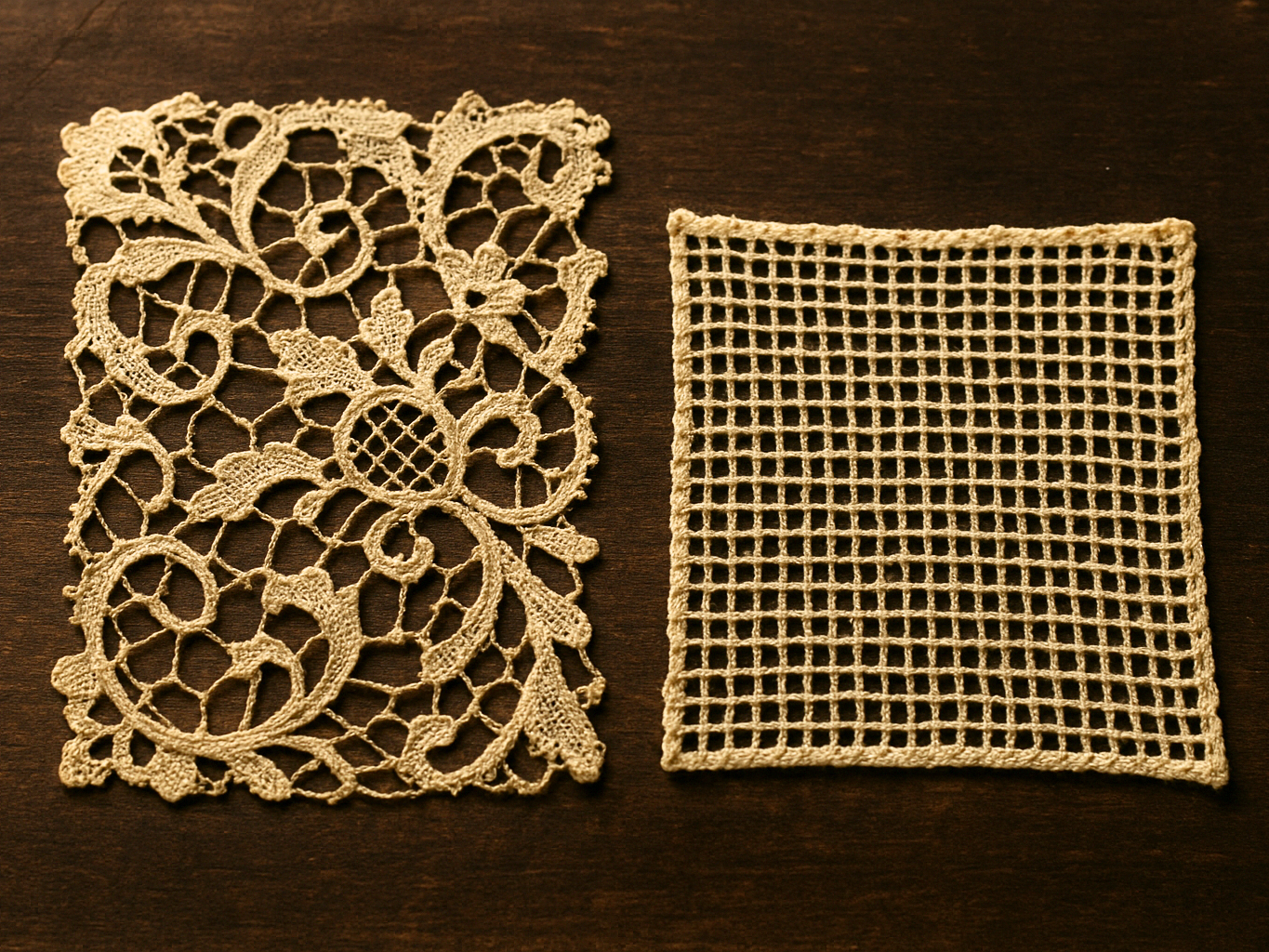#HistoryStitch: Saxon Bobbin & Tambour Lace – The Transition to Crochet in the 18th Century

When we think of lace crochet today, many picture delicate filet patterns or nostalgic edgings decorating linens or garments. But the roots of this craft go back much further – and they take us straight to baroque Saxony. Between Dresden, Leipzig, and the flourishing textile hubs of Europe, around 1700, an extraordinary transition took place: from exquisite bobbin lace to exotic tambour embroidery, and finally toward what would become crochet.
🏛️ From Bobbin Lace to a New Fashion
Saxon bobbin lace was world-renowned in the 17th century for its refinement. Dresden was home to entire guilds that produced lace pattern books. Lace was a symbol of wealth and prestige – worn by nobility, clergy, and the rising bourgeoisie.
Yet toward the end of the century, a new fashion arrived: tambour embroidery. This technique originated in India and Persia, spreading to Europe through trade. In France and Saxony, it quickly became a sensation:
-
Using a small hook (tambour needle), thread was looped directly into fine silk fabric.
-
The result was a chain of even loops – a clear ancestor of the crochet stitch.
-
Dresden and Leipzig soon became centers of excellence, perfecting the art.
🔄 The Transition Toward Crochet
What began as embroidery on fabric soon took on a new life.
👉 Craftspeople started experimenting with making loops freely in thread, without a fabric base.
This led to the birth of:
-
Filet crochet: patterns of filled and empty squares, inspired by embroidery charts.
-
Edgings & inserts: popular in 18th-century fashion for collars, cuffs, and caps.
-
Accessibility: crochet was easier to learn than bobbin lace, and spread more quickly.
🏺 Museums & Sources
Institutions like the German Textile Museum in Krefeld and the Grassi Museum in Leipzig preserve treasures from this transitional period, including:
-
Original tambour embroideries on silk, nearly indistinguishable from early crochet stitches.
-
Hybrid pieces combining embroidery and free loop work.
-
18th-century pattern books with schematic square grids – the direct precursors of filet crochet.
📚 Why This Matters
The story shows that crochet did not appear in isolation – it grew out of a cultural exchange. Without influences from India, Persia, and Saxon lace centers, crochet as we know it might never have emerged.
-
Bobbin lace = peak of European craftsmanship
-
Tambour = exotic import, sparking innovation
-
Crochet = democratization of lace, accessible to many women
🌟 My Conclusion
Saxon bobbin and tambour lace mark a true turning point in textile history. From a blend of luxury, fashion, and curiosity, the craft we now call crochet emerged in the 18th century.
👉 Next time you try a filet crochet pattern, remember you're continuing a tradition that began over 300 years ago – give it a try and bring history to life in your stitches!
#knittingtrends #madeinlove #historystitch #knittinghistory #historystitch
Stitch by stitch, we weave threads back into the past – and carry the lace artistry of centuries into our own time.
Warmly,
Kathrin ☀️🧶
Want to dive deeper into the world of stitches?
Explore my patterns, browse the blog, or join our community!
